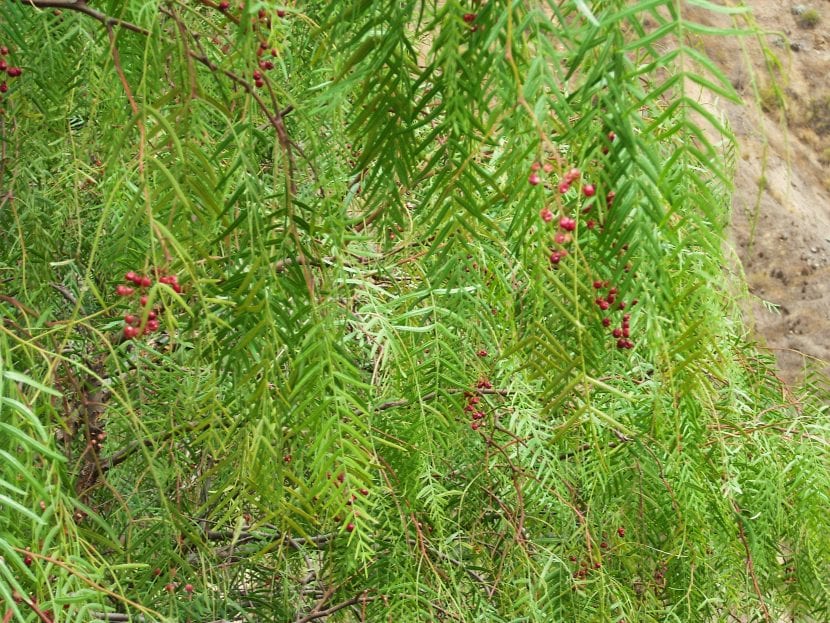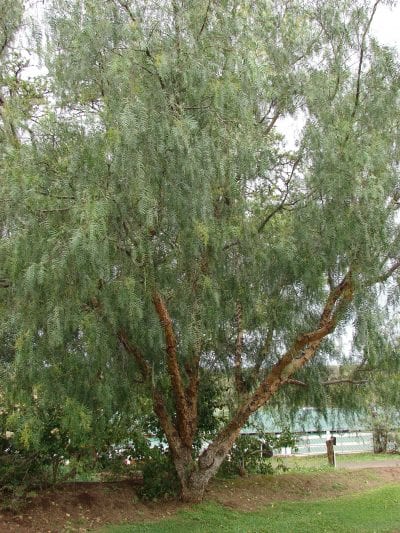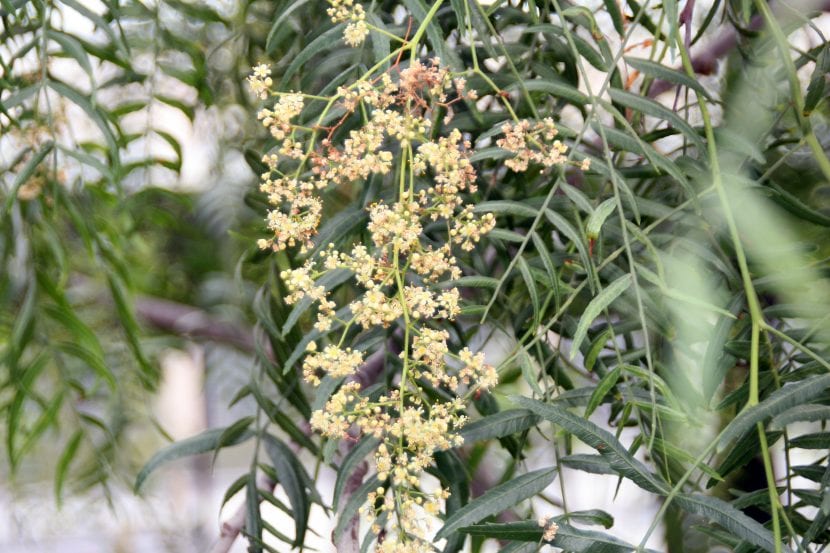
El pepper tree It is a plant that is widely used to bring some green to towns and cities. Above all, it is found in parks and in the outdoor areas of sports facilities, since although it can be pruned, the truth is that it needs a lot of space to be able to have a good development.
If you want to know more about him, then I'll tell you what are its characteristics and care So that, in this way, if you want to have one you can enjoy it to the fullest.
Origin and characteristics

Our protagonist is an evergreen tree native to southern Brazil, Uruguay and Argentine Mesopotamia whose scientific name is Schinus molle. It is popularly known as the pepper tree, American pepper, false pepper, false pepper, aguaribay, pirul or molle. It reaches a height of between 6 to 25 meters, with a trunk of about 40cm in diameter at its base. The crown is composed of hanging branches from which 9-28cm long odd or paripinnate leaves sprout. The leaflets are opposite to alternate, lanceolate, 1,3-5,1cm long by 0,2-0,5cm wide.
The flowers are grouped in terminal and axillary inflorescences, which are up to 25cm long. The fruit is globose, 5-7mm in diameter, red to pink when ripe.
What are their cares?

The care that the pepper tree needs are the following:
- Location: outside, in full sun.
- Earth:
- Garden: it can grow in all types of soils, even poor ones.
- Pot: universal growing substrate. It is not a plant that can be grown in a pot for a long time.
- Irrigation: 2-3 times a week in summer, and every 5-6 days the rest of the year.
- Subscriber: it is highly advisable to add some organic fertilizer once a month, such as guano or compost for example.
- Multiplication: by seeds in spring. Direct sowing in seedbed.
- Rusticity: withstands cold and frosts down to -7ºC.
What uses does it have?

Apart from being used as an ornamental plant, it has other uses, which are:
- Medicinal:
- Bark: in decoction it is used as a tonic, antispasmodic and healing.
- Resin: relieves cavities.
- Leaves: whether they are boiled or cooked, they serve as an analgesic, healing and anti-inflammatory for external use; if they are dry in the sun, they are used as a poultice to relieve rheumatism and sciatica.
- Other uses:
- Seeds: rubbing them on the skin generates a substance that keeps mosquitoes away.
- Leaves and bark: an essential oil is extracted that is used in toothpastes, perfumes and soaps.
What did you think of the pepper tree?
Excellent
We are glad to know that you liked it, Orlando 🙂
In my neighborhood there is a pepper tree. Clusters of highly scented pepper have already borne fruit. My question is if it is edible
Hi Nilda.
The fruits are used as a substitute for red pepper, but nothing else.
Regards!
Marvelous !! I have it on my patio, it is gigantic, beautiful and has a fascinating scent. A gift from nature ??
Hi Laurel.
Thanks for your comment. Without a doubt, it is a very interesting plant to have in a garden, even on the patio.
Greetings.
Hello!
I want to plant a pepper in my backyard, I would like to know: what kind of root does it have? whether it grows downward or expands. I'm worried it might break pipes.
I await your response.
Thank you very much.
Mariela.
Hello Mariela.
This is a tree that is advisable to plant at a minimum distance of 5 meters from pipes and others, since otherwise it could cause problems.
Regards!
Hello, the information is interesting, in addition to being easy to understand.
Thank you.
Thanks, Roberto 🙂
I have one in my patio, it gives a beautiful shade, it is about 4 meters from the building and about 10 from the cesspool, the tree was there from before the house was built, the question is that it is large and its crown reaches up to the roof of the house, I would like to know if it entails a problem due to its roots and if it is advisable to prune the part of the branches that face the top of the house. Thanks
Hi Adri.
No, I don't think it will cause problems for you. I know people who have it even closer to their home and nothing.
Yes, it is recommended to plant it at least five meters, but if you prune its crown a little (avoid drastic pruning of branches) you will keep it under control.
Greetings.
Hello, I would like to know if you have knowledge of any plantation that manages Schinus molle or any stand of this species.
Thank you very much for the article
clear, concrete, precise, I really liked the description
Hi Lidia.
Thank you very much, we are glad you liked it.
A greeting.